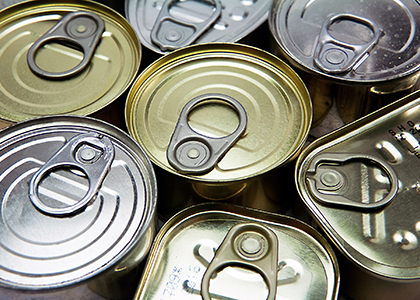
5 (More) Foods to Never Eat
By Claire Georgiou, Reboot Naturopath, B.HSc ND
When it comes to modern food technologies, the focus seems to be centered on the benefit of the food industry and its profits, not our health. Sure, we have more convenience than ever before, but at what price? Most of the foods made in a science lab, a.k.a. the ones you can’t find at the farmers’ market, cut food production costs by: Making it easy to mass produce, offering less of a need for higher-priced “real” ingredients, and increasing the shelf life of packaged goods. Unfortunately, to be this cost effective many of these foods are laden with chemicals and provide very little nutrition, possibly contributing to a long list of health complaints and symptoms including fatigue, weight problems and generally feeling unwell.
It certainly becomes difficult to find out exactly what these foods are doing to our health, but many studies indicate negative impacts on our health.
So, what can we do? We already discussed these 5 Ingredients that You Should Never Eat, so now let’s put the focus on these popular food items that we should do our best to avoid. Vote with your dollar and dodge the unhealthy bullet by putting a stop to buying and eating these foods.
A few simple changes and you can avoid these foods and chemicals:
1. Canned Foods
The linings that are found in tin cans commonly contain bisphenol-A (BPA), a synthetic estrogen that has been linked to a number of health problems from reproductive problems to heart disease, to diabetes and obesity. Studies show that the BPA in most people’s bodies exceeds the amount that suppresses sperm production and hormones and causes chromosomal damage to the eggs of animals. This is a scary fact and one that is also influencing the menstrual cycle and causing early puberty which has many long term health implications, such as an increase in reproductive cancers. You can get up to 25 micrograms of BPA per can, and this is a level that can have a large impact on individuals, especially younger folks.
NUTRITIONIST TIP: Choose glass containers over canned where possible, make your own fresh food or select BPA-free cans. If it doesn’t state it on the label, assume they use BPA.
2. Microwave Popcorn
Diacetyl, a chemical used in a lot of fake butter flavorings, is a chemical so harmful to factory workers that it’s known to cause an occupational disease called “popcorn lung.” They do not need to list this type of chemical in the ingredient list because it’s a classified trade secret, their very own chemical concoction (how scary?!). The popcorn bags are also lined with some concerning plastic chemicals.
NUTRITIONIST TIP: It’s much better to make your own and here’s a simple way to do just that: Make Snack Time Pop with Herb-Spiced Popcorn.
3. GMO foods
Most people tend to be on board with this, but getting food labels and companies to disclose this information is difficult. Often you need to seek labels that state they do not use GMO ingredients to be sure. Most of the nation’s corn (USA) supply is genetically engineered to either produce its own pesticide supply within the plant or withstand heavy sprayings of chemicals. Learn more on the concerning issues with genetically modified foods.
NUTRITIONIST TIP: Choose local fresh produce and organic where possible. See why we love to buy local and farm fresh produce.
4. Food Coloring
I recently went to my daughter’s school orientation and was floored at the junk food that was on offer for morning tea. It was a sea of brightly-colored processed foods for all the kids to enjoy. I’m sure I heard them talk about the importance of healthy eating?! Very bright artificial colors are generally the worst. There have been compelling studies that related artificial colors to hyperactivity and restlessness in some children.
A 2012 meta-analysis of studies concluded that color additives have an effect on hyperactive behavior in children, with a small subset showing more extreme behavior than others. Brian Weiss, a professor in the Department of Environmental Medicine at the University of Rochester Medical Center who has researched this issue for decades, says he is frustrated that the FDA has not acted on the research showing the connection between artificial dyes and hyperactivity and supports banning artificial colors. Like most other scientists in this field, he thinks more research, particularly investigating dyes’ effects on the developing brain, is imperative. It is important to note that some artificial dyes are also classified as possible carcinogens.
Even purchasing natural colors unfortunately doesn’t always provide a real healthy alternative because they often use other questionable ingredients.
NUTRITIONIST TIP: Using natural colors from nature is always best such as berries, strawberries, beets, turmeric and other naturally bright foods can be fun! Our DIY Face Paint article will help give you more ideas.
5. Fast Food
This doesn’t mean a real burger or some chips once in a while, it’s primarily the big food chains that often turn a simple ingredient list into a chemical essay. This is often due to simple cutting of costs, increasing the shelf life (no nutrients = longer shelf life), and basically providing a chemical s%#t storm. From the ice creams, to the burger buns, to the patties and all the way down to the fries. I was amazed there are up to 13 ingredients for fries in one particular fast food chain.
Here is a list to give you some idea: Potatoes, Canola Oil, Soybean Oil, Hydrogenated Soybean Oil (all GMO Oils), Beef Flavour [Wheat and Milk Derivatives], Citric Acid, Dextrose, Sodium Acid Pyrophosphate, Salt, Corn Oil, TBHQ and Dimethylpolysiloxane. Excuse me I thought it was potatoes, oil and salt?